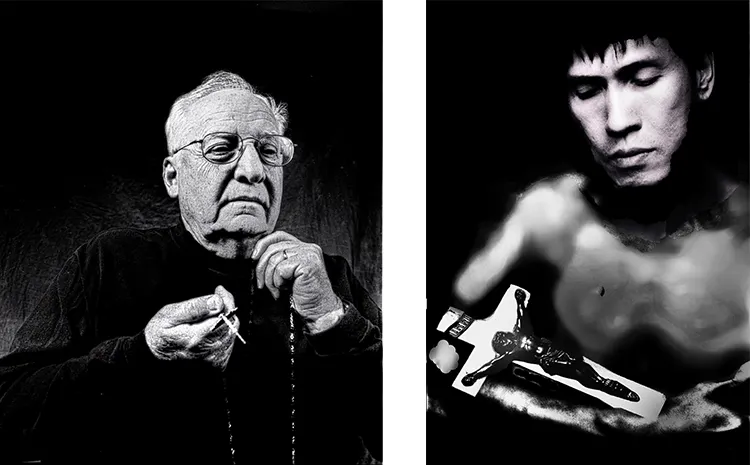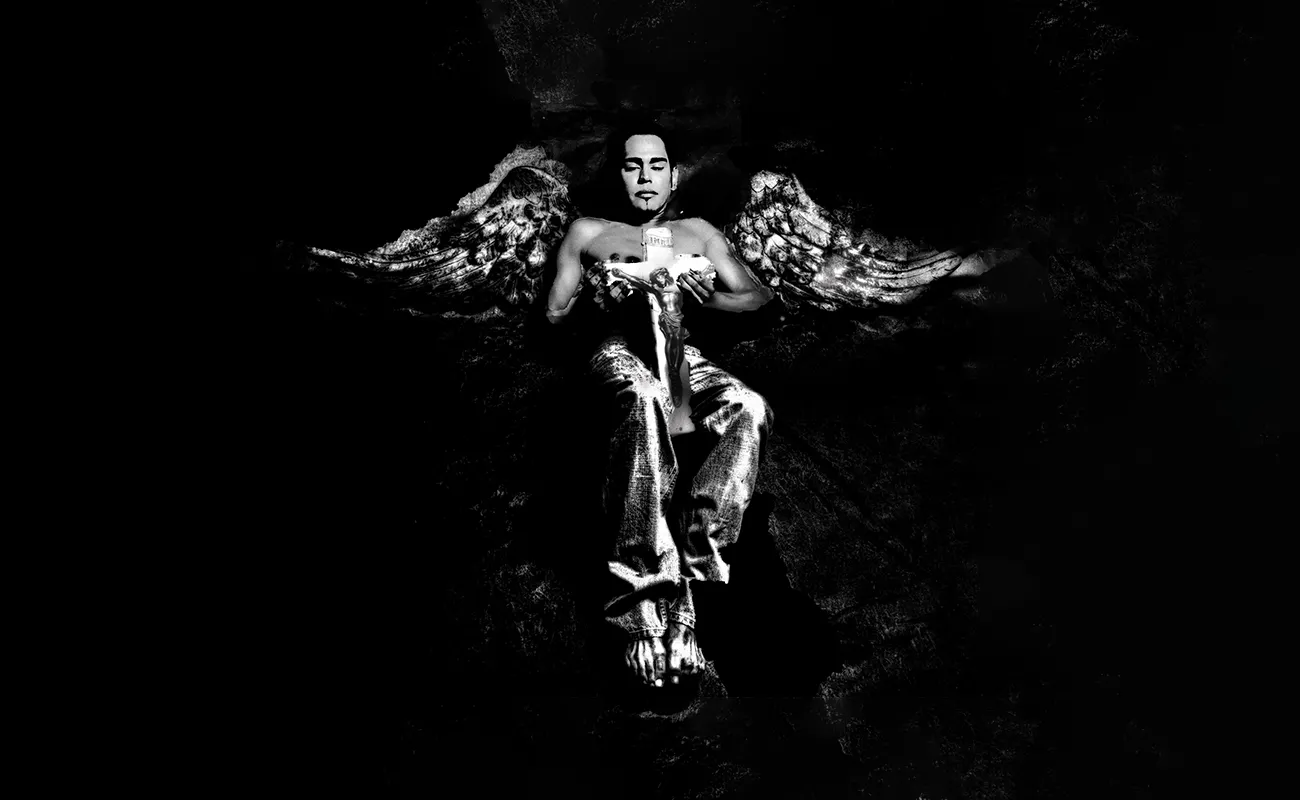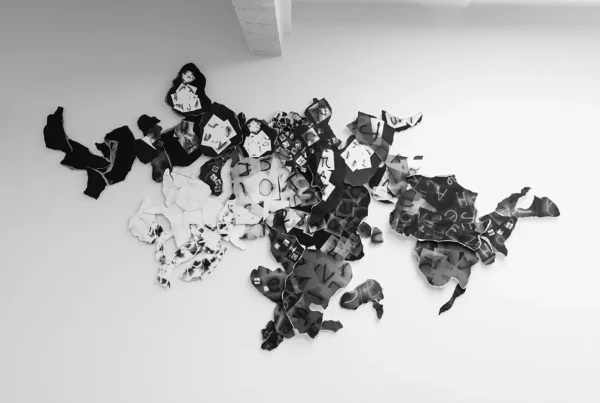“Losing my sight transformed the way I see the world, much like it appears in an impressionist painting—this perspective is the foundation of my work and my art’s deeper spiritual meaning.”
A Life Defined by Vision and Resilience
Kurt Weston’s journey as an artist began with a passion for photography that took root during his youth. Inspired by portraits in old issues of Life and Look magazines, Weston found himself captivated by the way photographs could tell intimate and profound stories. A self-made collage of these images adorned his bedroom wall, serving as an early testament to his creative aspirations. Despite initial resistance from his parents, who doubted the viability of art as a career, Weston’s determination eventually led him to a Bachelor of Arts in Photography from Columbia College, Chicago.
In the 1990s, Weston’s career as a commercial and fashion photographer flourished. However, this promising trajectory was abruptly altered when he was diagnosed with AIDS. The disease not only left him legally blind but also profoundly influenced his artistic direction. Weston’s limited peripheral vision in one eye provides him with a unique perspective akin to an impressionist painting, which he now integrates into his work. The loss of sight became the foundation for his critically acclaimed series, “Blind Vision,” a collection of self-portraits that poignantly explore the emotional and psychological weight of sight loss.
The harrowing experience of living with AIDS during its early epidemic shaped Weston’s worldview and artistic themes. His time in hospital wards filled with abandoned, terminally ill patients revealed the stark isolation and stigma of the era, igniting a profound empathy that permeates his art. This chapter of his life introduced themes of mortality, suffering, and resilience that continue to resonate in his work.
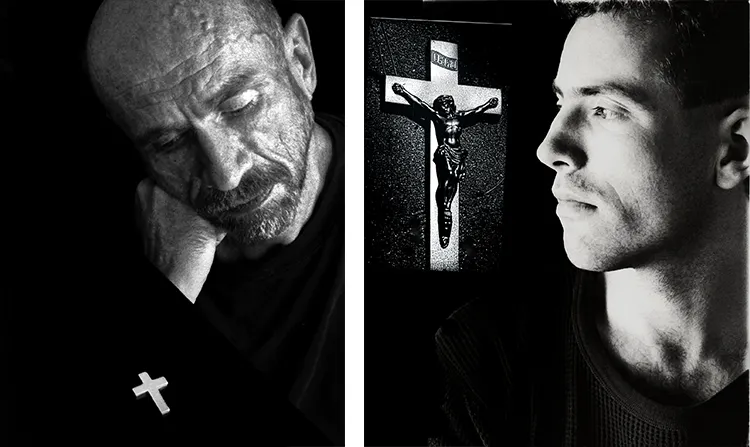
Kurt Weston: Transforming Tragedy into Timeless Art
Weston’s art consistently confronts themes of loss, resilience, and the enduring human spirit. His celebrated series, “Blind Vision,” serves as a powerful exploration of his own visual impairment, symbolizing the disconnection and reimagined reality experienced by those with sight loss. Through bold chiaroscuro techniques, Weston’s portraits transcend physical appearances, illuminating the inner struggles and fortitude of his subjects. The series has been widely exhibited and remains a cornerstone of his artistic legacy.
Another major body of work, “Hearts of a Silent Age,” delves into the realities of aging, mortality, and the passage of time. These portraits, stark yet empathetic, have traveled internationally as part of the exhibition Sight Unseen, garnering widespread acclaim. Weston’s ability to capture vulnerability and dignity in equal measure reflects his deep connection to his subjects, many of whom face the societal invisibility of aging.
His later series, “Remember: An AIDS Memorial Retrospective,” is a poignant tribute to friends lost to AIDS during the epidemic. These portraits, taken in the 1980s and 1990s, depict individuals in the prime of their lives, frozen in time before illness claimed them. The series mourns the unfulfilled potential of an entire generation, offering a deeply personal and historical narrative that underscores the devastating toll of the disease.
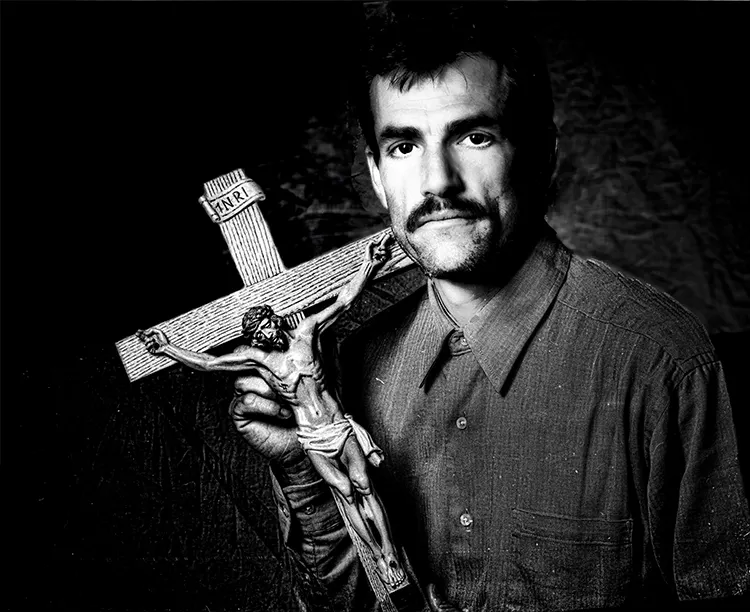
Exploring Faith Through the Lens of Adversity
Weston’s latest work, “Blind Faith,” represents a profound exploration of spirituality, hope, and the resilience of belief in the face of adversity. Created in luminous black-and-white, this series reflects his personal spiritual journey and renewed appreciation for Catholic rituals and iconography. Drawing inspiration from his own experiences and a broader resurgence of faith in contemporary society, Weston seeks to capture the human condition through the lens of devotion and redemption.
Central to the “Blind Faith” series is the symbolic crucifix, a recurring motif representing sacrifice, hope, and spiritual transcendence. Portraits such as “A Modern Crucifixion,” which features Weston’s brother wearing a radiation mask and holding a crucifix, weave together themes of suffering, perseverance, and faith. Other works, like “Christ Bearer” and “Sacrifice,” highlight the strength and humility of everyday individuals, presenting faith as both a deeply personal and universal source of solace.
Through this series, Weston crafts a narrative that is at once contemporary and timeless. His subjects, often portrayed in raw, unfiltered realism, embody the enduring impact of faith in their lives. By juxtaposing iconic religious symbols with modern struggles, Weston creates a body of work that challenges viewers to consider the power of belief in navigating life’s challenges.
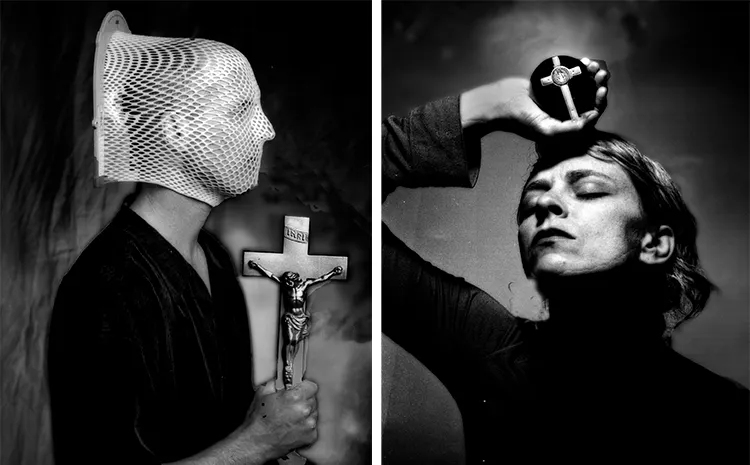
Kurt Weston: Shaping a Legacy Through Artistic Advocacy
Weston’s work extends beyond the personal into broader themes of advocacy and transformation. His connection to social issues is deeply rooted in his early years as a grassroots AIDS activist in Chicago, where he founded the “Surviving with AIDS Network.” This activism continues to influence his art, which often sheds light on marginalized communities and untold stories.
Weston’s artistic influences include Diane Arbus, Robert Mapplethorpe, and Joel-Peter Witkin, whose explorations of identity, vulnerability, and the unconventional resonate in his own practice. He has also experimented with alternative photographic techniques, such as scanner-based image capture, which he utilized in his “Blind Vision” series. These innovations reflect his commitment to pushing the boundaries of photographic art, challenging perceptions of what the medium can achieve.
His numerous accolades, including the Arts Orange County Outstanding Artist Achievement Award, affirm his contributions to both art and advocacy. Whether capturing the fragility of human existence or the transformative power of faith, Weston’s work remains a testament to resilience and creativity in the face of immense adversity. With ongoing projects like “Blind Faith,” Weston continues to inspire and provoke, offering a deeply introspective yet universal perspective on the human experience.
